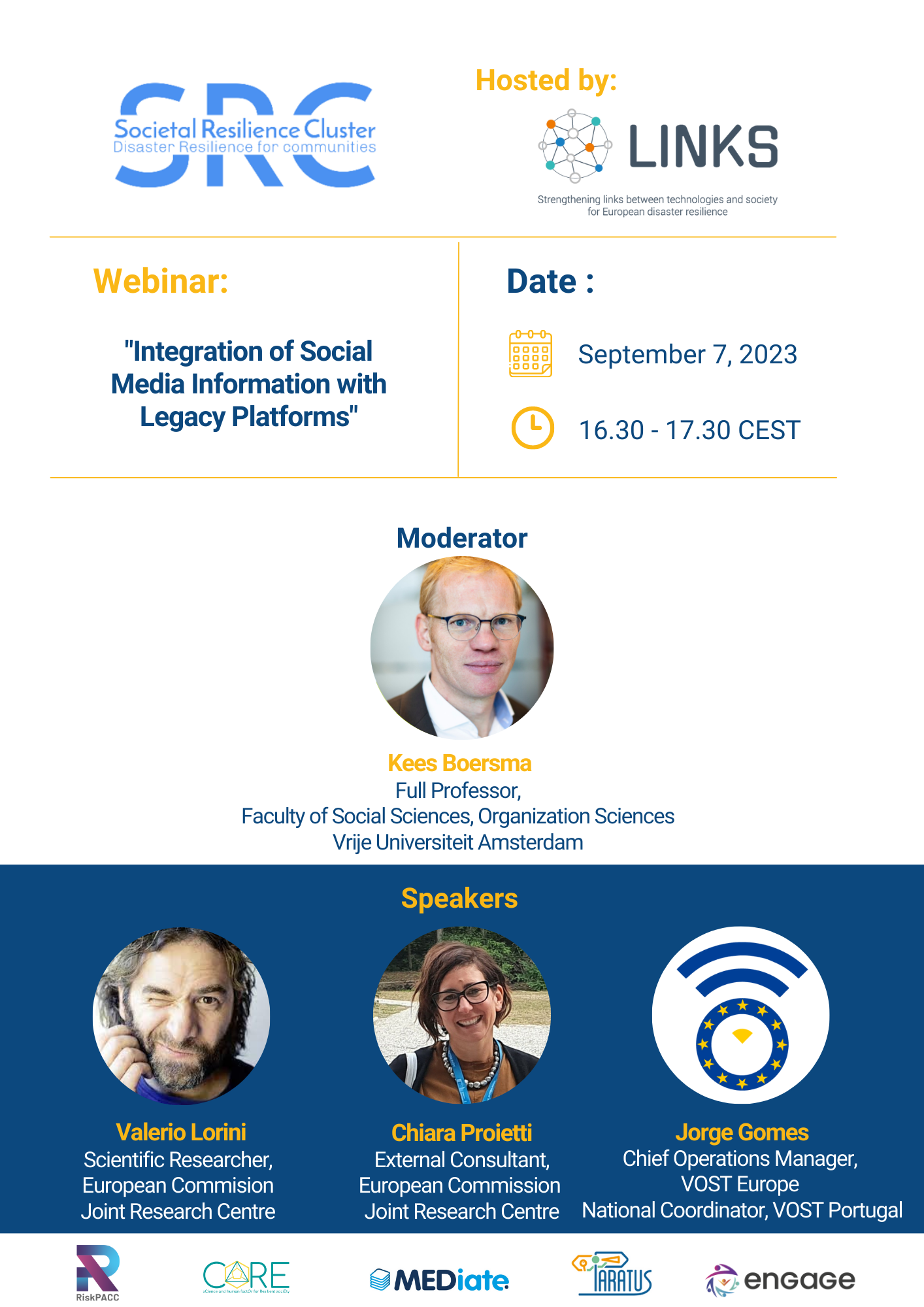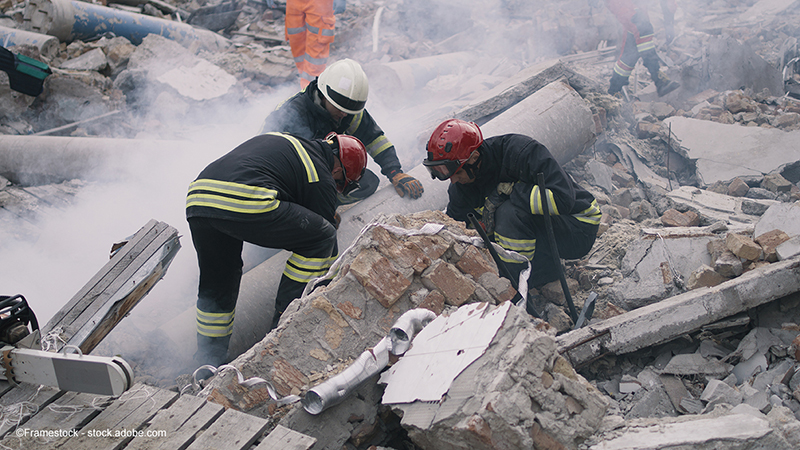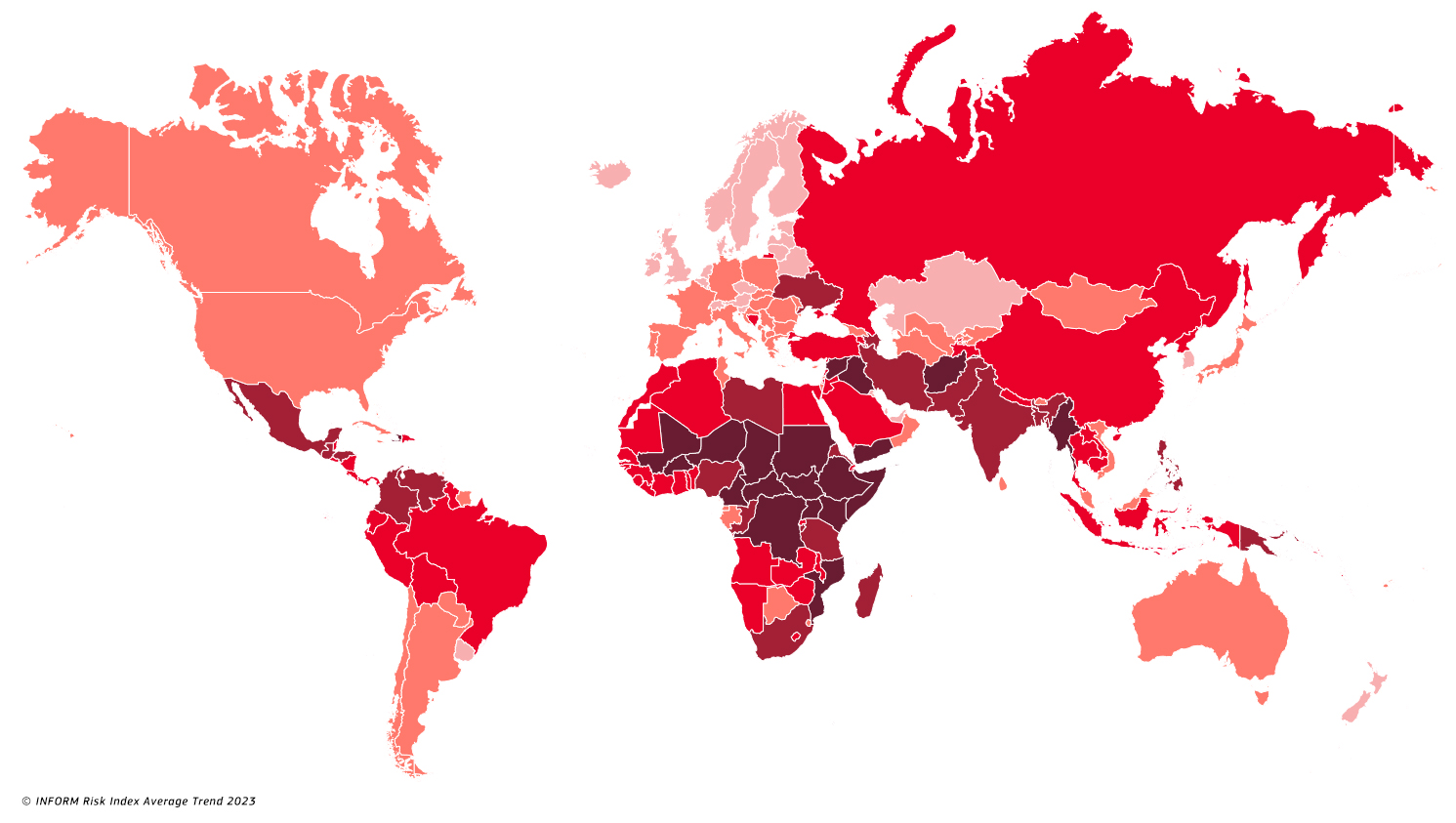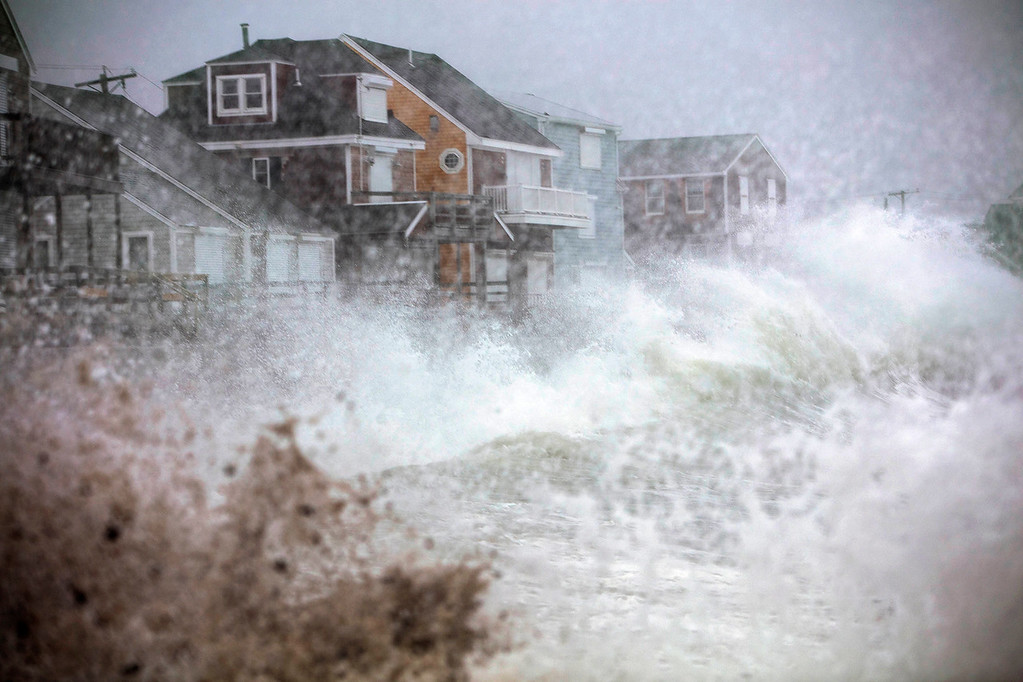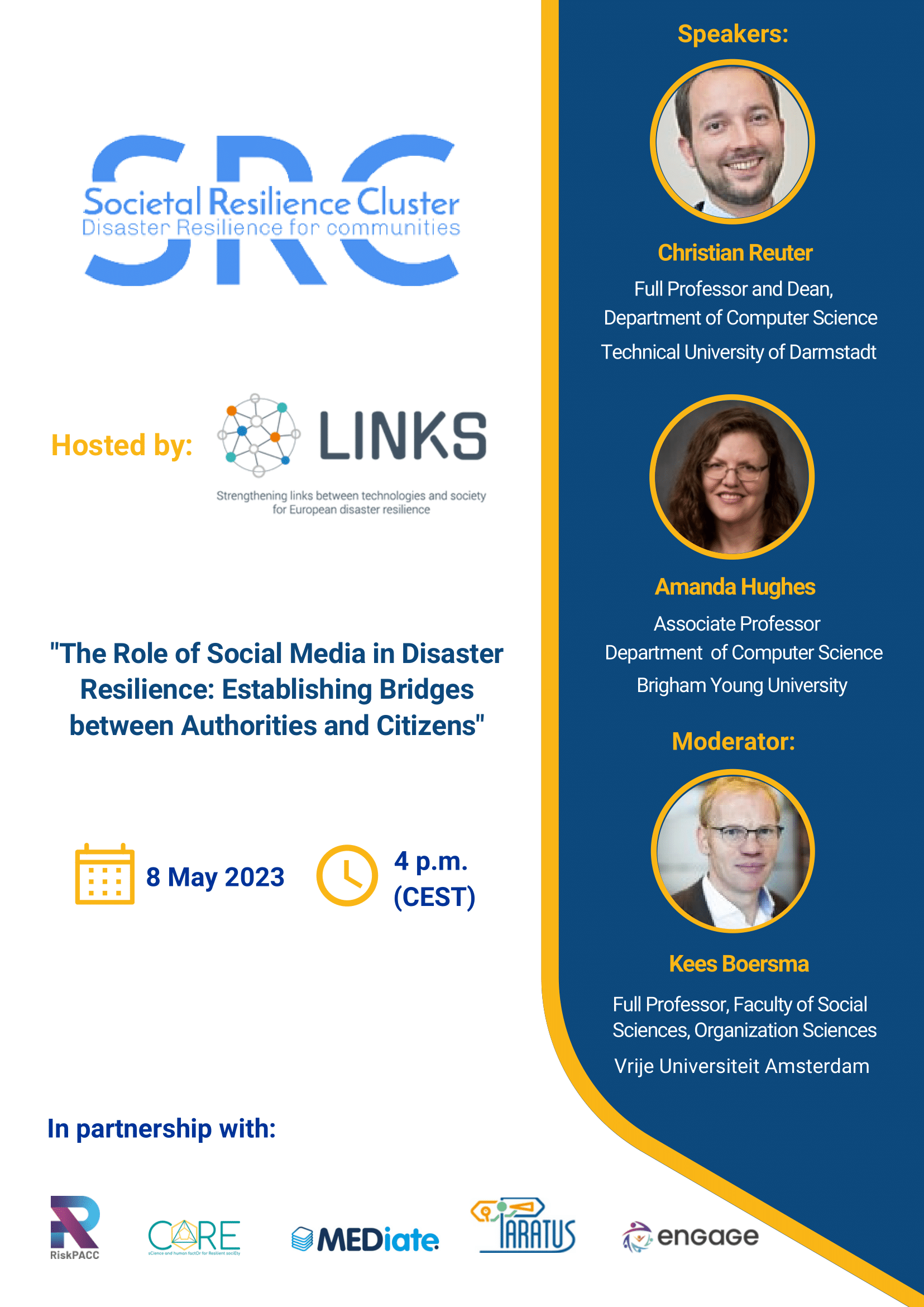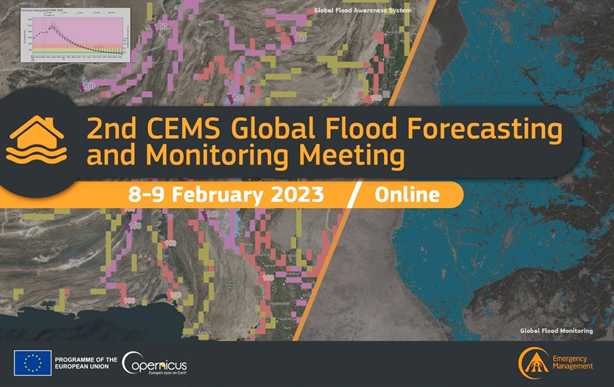The Role of Social Media in Disaster Resilience: Integration of Social Media Information with Legacy Platforms.
Webinar will take place on 7 September at 4.30 p.m. CEST.
The Societal Resilience Cluster of Horizon Projects is launching a series of webinars in 2023 on topics which focus on the strengthening of European disaster and crisis resilience.
Full details can be seen in the attachment and please register using the link: https://www.cmine.eu/events/122304
